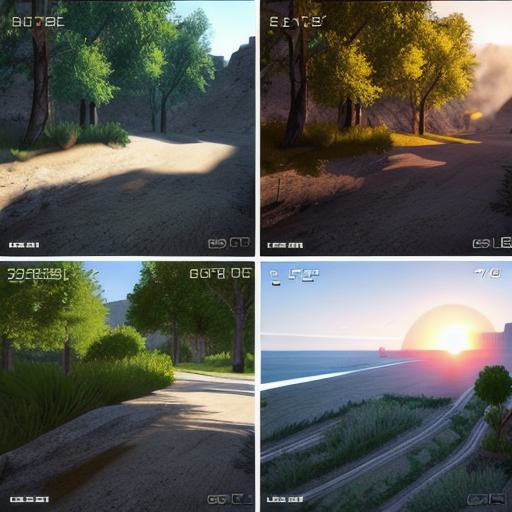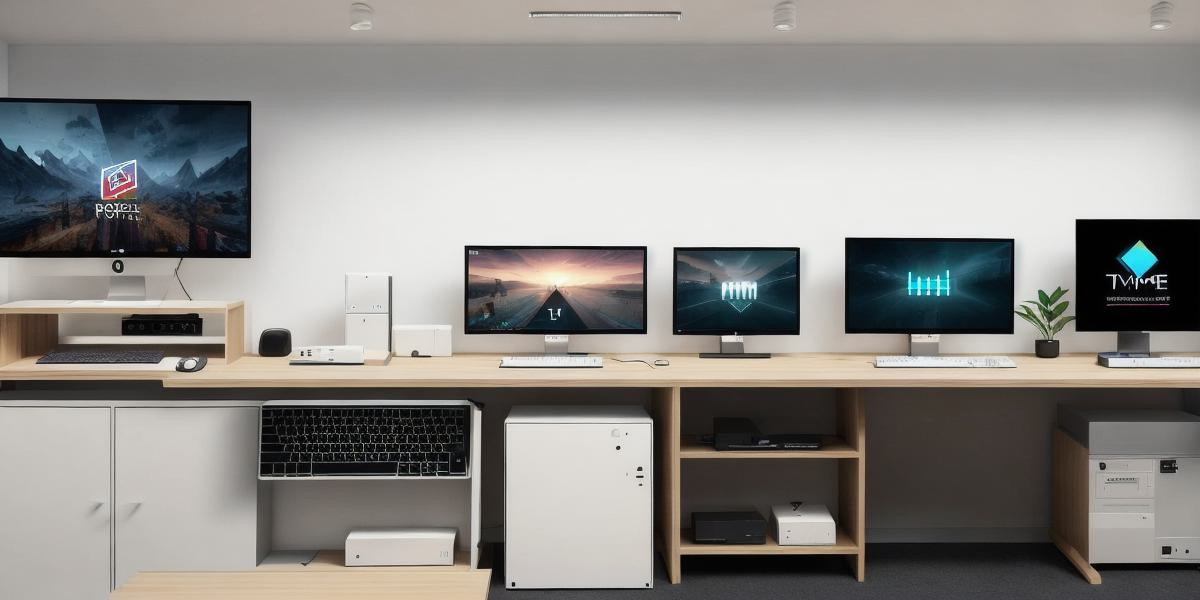Introduction:
The video game industry has grown exponentially in recent years, with millions of gamers worldwide enjoying a wide variety of games across various platforms. Game developers are the unsung heroes behind these immersive experiences, constantly pushing the boundaries of what is possible in the realm of gaming. However, creating a high-quality game requires more than just artistic talent and creative vision; it also demands an understanding of the hardware that powers the experience. In this comprehensive guide, we will explore the essential hardware used by game developers to bring their games to life.
Hardware Requirements for Game Development:
Before diving into the specific hardware components used in game development, it’s important to understand the general requirements for creating a game. These requirements can vary depending on the type of game being developed and the target platform, but some common factors include processing power, memory, graphics capabilities, storage space, and input/output devices.

Processing Power:
The processing power of a computer or console is one of the most critical factors in game development. It determines how quickly the game can run and how smoothly it will perform, which can have a significant impact on player experience. Game developers typically use high-end processors, such as those found in high-performance gaming PCs or next-generation consoles like the PlayStation 5 or Xbox Series X/S.
Memory:
Another crucial factor in game development is memory. Games require a significant amount of RAM to store data and execute instructions efficiently. Game developers typically use large amounts of RAM, ranging from 16GB to 32GB or more depending on the complexity of the game and the platform it’s being developed for.
Graphics Capabilities:
The graphics capabilities of a computer or console are also essential in game development. Games require high-quality visuals to create an immersive experience, and this requires powerful graphics hardware. Game developers typically use dedicated graphics cards, such as those found in NVIDIA or AMD GPUs, to handle the complex rendering and shading tasks required by modern games.
Storage Space:
Storage space is another critical factor in game development. Games require a significant amount of storage space to store all the assets, textures, audio files, and other data needed to run smoothly. Game developers typically use large-scale hard drives or solid-state drives (SSDs) to provide ample storage for their games.
Input/Output Devices:
Finally, input/output devices are essential in game development. These include controllers, keyboards, mice, and other peripherals that allow players to interact with the game. Game developers typically use a variety of input/output devices depending on the type of game being developed and the platform it’s being released for.
Specific Hardware Components:
Now that we have an understanding of the general requirements for game development let’s dive into the specific hardware components used by game developers to create their games.
Processor:
As mentioned earlier, processing power is a critical factor in game development. Game developers typically use high-end processors, such as those found in high-performance gaming PCs or next-generation consoles like the PlayStation 5 or Xbox Series X/S. These processors are designed to handle the complex calculations and instructions required by modern games, providing a smooth and seamless gameplay experience for players.
Graphics Card:
Graphics cards are another essential component in game development. Dedicated graphics cards, such as those found in NVIDIA or AMD GPUs, are used to handle the complex rendering and shading tasks required by modern games. These graphics cards are designed to deliver high-quality visuals, providing an immersive experience for players.
RAM:
As mentioned earlier, memory is a critical factor in game development. Game developers typically use large amounts of RAM, ranging from 16GB to 32GB or more depending on the complexity of the game and the platform it’s being developed for. RAM provides a fast and efficient way to store data and execute instructions, ensuring that games run smoothly and efficiently.
Storage:
Storage space is another critical factor in game development. Games require a significant amount of storage space to store all the assets, textures, audio files, and other data needed to run smoothly. Game developers typically use large-scale hard drives or solid-state drives (SSDs) to provide ample storage for their games.
Input/Output Devices:
Finally, input/output devices are essential in game development. Game developers typically use a variety of input/output devices depending on the type of game being developed and the platform it’s being released for. These can include controllers, keyboards, mice, and other peripherals that allow players to interact with the game.
Case Studies:
Now let’s take a look at some real-life examples of how hardware has impacted game development.
The Impact of Next-Generation Consoles on Game Development:
With the release of next-generation consoles like the PlayStation 5 and Xbox Series X/S, game developers have been able to create games with unprecedented visual and performance capabilities. These consoles feature powerful processors, dedicated graphics cards, and large amounts of RAM, providing game developers with the tools they need to create immersive and high-performance gaming experiences.
For example, the PlayStation 5 features a custom AMD Zen 2 CPU with 8 cores and 16 threads, and a custom RDNA 2 GPU with 3,584 CUDA cores and 28 teraflops of processing power. This powerful hardware allows game developers to create games with stunning visuals, smooth performance, and fast load times, providing players with an unparalleled gaming experience.
The Impact of Virtual Reality on Game Development:
Virtual reality (VR) is another area where hardware has had a significant impact on game development. VR technology requires powerful processors, dedicated graphics cards, and high-resolution displays to deliver the immersive and interactive experiences that players have come to expect.
For example, the Oculus Quest 2, one of the most popular VR headsets on the market, features a Qualcomm Snapdragon XR1 processor with 6GB of RAM and an Adreno 640 GPU with 6GB of graphics memory. This powerful hardware allows game developers to create VR games with high-quality visuals, smooth performance, and minimal latency, providing players with a truly immersive gaming experience.

The Importance of Hardware Optimization in Game Development:
Finally, it’s important to note that hardware optimization is a critical aspect of game development. Game developers must ensure that their games are optimized for the specific hardware they will be running on, in order to deliver the best possible performance and user experience.
This can involve a variety of techniques, such as reducing the number of draw calls, minimizing texture sizes, and using compressed audio formats. Game developers must also be constantly testing and tweaking their games to ensure that they are running smoothly and efficiently on a wide range of hardware configurations.
Conclusion:
In conclusion, hardware plays a critical role in game development. From processing power and graphics capabilities to storage space and input/output devices, the right hardware can make all the difference in creating a high-quality and immersive gaming experience. By understanding the specific requirements for game development and utilizing the latest and greatest hardware technologies, game developers can push the boundaries of what is possible in the realm of gaming.
FAQs:
- What is the most important factor in game development?
The most important factor in game development is the overall user experience. Game developers must create games that are fun, engaging, and provide a seamless and immersive experience for players.
- How has virtual reality impacted game development?
Virtual reality technology has had a significant impact on game development, providing game developers with new tools and techniques to create truly immersive and interactive gaming experiences. VR games require powerful processors, dedicated graphics cards, and high-resolution displays to deliver the best possible performance and user experience.
- What is hardware optimization in game development?
Hardware optimization in game development involves ensuring that a game is optimized for the specific hardware it will be running on. This can involve a variety of techniques, such as reducing the number of draw calls, minimizing texture sizes, and using compressed audio formats, to ensure that games run smoothly and efficiently on a wide range of hardware configurations.



